Samsung Galaxy Z Fold 3 vs. Galaxy Z Flip 3: How do these foldables compare?
Foldable face-off: Samsung Galaxy Z Fold 3 vs. Galaxy Z Flip 3

Samsung rules the foldable market for now, and while that makes it the king of a sparsely populated hill, its foldables are spoiling for some competitors to knockdown. We should finally see that happen later this year, but for now, Samsung’s foldables reign supreme together.
The Galaxy Z Fold 3 and the Galaxy Z Flip 3 are the latest iterations of Samsung's foldables and despite a number of similarities, they are two very different takes on what a foldable can be. The Galaxy Z Fold 3 offers massive screen real estate (and a price to match), while the Galaxy Z Flip 3 is a (relatively) affordable pocketable powerhouse with a 6.7-inch display.
There’s room for both in the market, but which of these foldables is right for you?
- Best smartphones in 2021
- Samsung Galaxy Buds 2 review: Entry-level price, premium power
- Best mobile phone deals in August 2021
Samsung Galaxy Z Fold 3 vs. Galaxy Z Flip 3: price and value
Both of Samsung's foldables got a price cut this year, which is a good thing as last year it was $1,999 for the Galaxy Z Fold 2 and $1,449 for the Galaxy Z Flip 5G.
The Galaxy Z Fold 3 drops to $1,799, mirroring the $200 price cut across the entire Galaxy S21 lineup earlier this year. While it's a welcome move, rumors had hinted at up to a 20% price cut and something closer to that $1,600 mark would have been nice to see.
Samsung would likely argue that you are getting two devices in one with the Galaxy Z Fold 3 able to serve as a phone and a tablet, but even with this price cut, it remains true that you could buy a Galaxy S21 Ultra and a Galaxy Tab S7 for less. Is that as convenient? Absolutely not, but nearly $1,800 remains a tall ask for any phone.
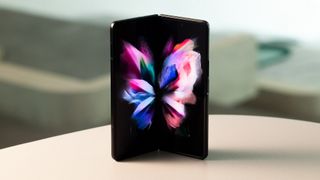
The Galaxy Z Flip 3 by comparison got the kind of price cut that everyone was hoping for taking it all the way down to $999. While the Galaxy Z Flip 5G had occasionally dipped to that price on sale in recent weeks, it is amazing to see Samsung hit that price point at launch with the Galaxy Z Flip 3.
Stay in the know with Laptop Mag
Get our in-depth reviews, helpful tips, great deals, and the biggest news stories delivered to your inbox.
While the Galaxy Z Flip 3 can't match up perfectly with the Galaxy S21 Plus which also launched at $999, the primary difference is the lack of a telephoto lens. While I'm an advocate for telephoto cameras on phones, I would freely concede that the ability to fold your phone in half is a worthwhile tradeoff for many buyers.
This one is an easy win for the Galaxy Z Flip 3, even the most aggressive estimates didn't suggest Samsung would get a foldable below $1,000 this year and it could be the tipping point for mainstream adoption of foldables.
Winner: Galaxy Z Flip 3
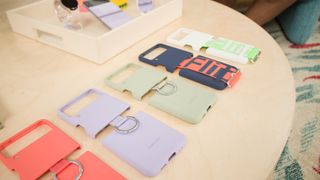
Samsung Galaxy Z Fold 3 vs. Galaxy Z Flip 3: design
There is a lot of shared DNA between the Galaxy Z Fold 3 and Galaxy Z Flip 3, with some obvious differences. The hinge mechanism and displays are the first similarities that come to mind, but there’s more. Both phones now feature a similar vertical rear camera alignment and both the finishes and button configurations now match more closely than last year’s models.
Neither phone precisely follows the current Samsung Galaxy design language. They lack the Contour Cut Camera. However, both phones are still unmistakably Samsung devices.
The biggest aesthetic departure is the two-tone color scheme of the Galaxy Z Flip 3. The top section of the phone surrounding the cover display and two rear cameras is always black regardless of the phone’s primary color. As a long-time Pixel owner, it is reminiscent of the Pixel 3 and earlier models. I’m a fan, but it might prove divisive.
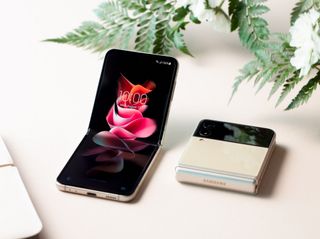
The Galaxy Z Fold 3, by comparison, sticks to a much more traditionally uniform color scheme. The biggest change from last year’s model is the rear camera housing. Rather than the old rectangular bump or the new Contour Cut, it moves to a much more minimal elongated oval. I’m on board with the change, but curious to see what it’s like setting it down if you opt to go caseless.
What matters most is the horizontal versus vertical display fold. The Galaxy Z Fold 3 is a (thick) traditional phone that unfolds to become a tablet. The Galaxy Z Flip 3 is a throwback to the old clamshell or flip phones with an external display primarily for notifications. In contrast, the interior display on the Galaxy Z Flip 3 is a much broader canvas than you'll get on any standard phone.

A notable design upgrade for both phones in this generation is the addition of IPX8 water resistance. Both phones will handle being submerged completely in up to about five feet of water; that’s a game-changing durability upgrade. What’s more, the Galaxy Z Fold 3 offers S Pen compatibility. Both phones also offer more durable screens than on previous models and from a usability standpoint, they also feel better than the somewhat rubbery top layer on last year's foldables.
I don’t see a clear winner in design between these two phones as the designs serve different purposes. Both execute well on their intended purpose, and while the competition is limited at the moment, it’s clear Samsung has the competition outgunned for now.
Winner: Draw
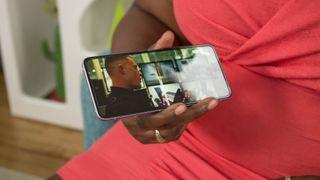
Samsung Galaxy Z Fold 3 vs. Galaxy Z Flip 3: displays
We will put the Galaxy Z Fold 3 and Galaxy Z Flip 3 through our rigorous display testing once we have the devices in hand. For now, some brief hands-on time with the devices and Samsung’s track record gives us a clear picture of what to expect.
The Galaxy Z Fold 3 features an identical display configuration as the previous model, with a 6.2-inch exterior display and a 7.6-inch interior display. However, that exterior cover display gets a bump to a 120Hz refresh rate along with a slightly higher resolution.
The interior display isn't left out completely though. The introduction of an under-display camera means an almost unblemished 7.6-inch display, a slight mosaic effect is visible where the camera is located. The aforementioned addition of S Pen support is the other major upgrade for the interior display. The Galaxy Z Fold 3 can now serve as a perfect digital notebook.

The Galaxy Z Flip 3 isn't left out with significant improvements to both of its displays. The 6.7-inch interior display gets the upgrade to a 120Hz refresh rate, now matching the rest of Samsung's flagships.
While that was certainly one of our top requests for this year, the other change is almost as crucial with the cover display now four times larger. On last year's model, this was basically only useful as a clock, now full notifications can be viewed and it will be vastly easier to use as a viewfinder for selfies with the phone's superior rear cameras.
Samsung remains the best in the business when it comes to mobile displays, and its foldables are no different. While the Galaxy Z Fold 3 is the more impressive of the two, both of these phones have beautiful displays.
Winner: Galaxy Z Fold 3

Samsung Galaxy Z Fold 3 vs. Galaxy Z Flip 3: performance
Our reviews will include our full performance testing on both devices, but there's no doubt that the Galaxy Z Fold 3 will be the winner. Both phones feature the same Snapdragon 888 processor, but the 12GB of RAM in the Galaxy Z Fold 3 should help it edge out the Galaxy Z Flip 3 with just 8GB of RAM.
Both phones internally are near carbon copies of the Galaxy S21 lineup from earlier this year and while those phones have been edged out by the OnePlus 9 and others, they remain plenty powerful for any game or task that is presently available on Android.
There's no reason to worry about performance on these devices, but the Galaxy Z Fold 3 is almost unquestionably going to come out the winner.
Winner: Galaxy Z Fold 3

Samsung Galaxy Z Fold 3 vs. Galaxy Z Flip 3: cameras
While the Galaxy Z Fold 3 did make the switch to an under-display camera for its interior display, all of the rest of the cameras on both of these phones remain identical to their predecessors.
As we have learned in recent years, the camera sensors aren't the full story for any phone, Google in particular has managed to do more with less. The Snapdragon 888 does offer some AI and machine learning enhancements that may improve the photos from both phones but particularly given the price of the Galaxy Z Fold 3 it hurts that the camera hardware is unchanged.
If you are unfamiliar with last year's models, this means they both have all 12-megapixel sensors on the back. The Galaxy Z Fold 3 includes three rear sensors covering wide-angle, ultra-wide and telephoto, while the Galaxy Z Flip 3 is limited to wide-angle and ultra-wide.
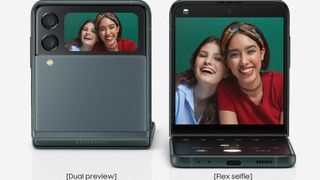
Front-facing cameras are almost the same story with both phones retaining a 10MP hole-punch camera. The Galaxy Z Fold 3 does make one change here with that new 4MP under-display camera on its interior display.
Samsung has taken some considerable strides with its cameras in recent years, which means these are still going to be solid, but given what we have seen in devices like the Galaxy S21 Ultra it is hard to settle. The inclusion of the telephoto makes the Galaxy Z Fold 3 the winner for its versatility, but cameras are one area that I consider to be a letdown for both of these phones.
Winner: Galaxy Z Fold 3
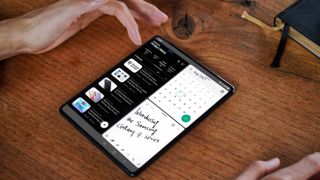
Samsung Galaxy Z Fold 3 vs. Galaxy Z Flip 3: software
Software is arguably a tie as Samsung offers the same four years of software support across its flagship models with three years of major OS updates, but I give a slight edge to the Galaxy Z Fold 3.
Samsung’s Flex Mode and other foldable specific optimizations, particularly the multitasking capabilities, are more useful on the larger display. Having three apps open on the Z Fold's 7.6-inch display feels too crowded to me, but running two apps is outstanding and productivity-enhancing.
Conversely, not every app does an excellent job of supporting the large and unusual aspect ratio of the interior display on the Galaxy Z Fold 2 (I’m looking at you Instagram), an issue the Galaxy Z Flip 3 doesn't face. Otherwise, One UI is essentially the same on both phones, and while my preference is for the more vanilla Android you get on the Pixel phones, I never have trouble switching back and forth between them.
No one is a loser here as Samsung currently offers the best software support of any Android manufacturer. Still, the larger screen of the Galaxy Z Fold 3 does a better job of showcasing some of Samsung’s foldable software touches.
Winner: Galaxy Z Fold 3
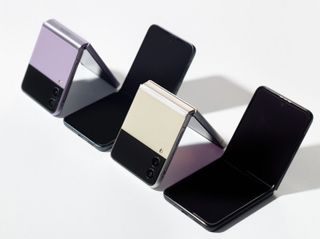
Outlook
The Galaxy Z Flip 3 should crush the Galaxy Z Fold 3 when it comes to sales given its vastly more enticing $999 price point. I personally love the capabilities of the Galaxy Z Fold 3, but there is no question that the Galaxy Z Flip 3 is the better mainstream phone.
I’ll say it again: the Galaxy Z Flip 3 is what most people wanted out of the iPhone 12 mini. It’s a phone that fits in your pocket and has all of the power of the big flagship phones. Simply put, larger screens are better — it's the reality that came crashing down on the iPhone 12 mini and why I suspect it didn’t sell well. The Galaxy Z Flip 3 does this again and its new price makes it a much less outlandish suggestion.
The Galaxy Z Fold 3, even with its $200 price cut, is too expensive to crack into the mainstream, but it should get more of a chance to shine this year. The added productivity features and capabilities made possible by that massive interior display are something travelers will appreciate. It won’t sell like the Galaxy Z Flip 3, but it should massively outperform the Galaxy Z Fold 2.
Overall, this looks like it will be the breakout year for foldables as Samsung has cracked that $1,000 barrier and its competitors will need to rise to that challenge. I look forward to seeing what other foldables arrive this year, but I'll be surprised if anyone manages to unseat Samsung.
Sean Riley has been covering tech professionally for over a decade now. Most of that time was as a freelancer covering varied topics including phones, wearables, tablets, smart home devices, laptops, AR, VR, mobile payments, fintech, and more. Sean is the resident mobile expert at Laptop Mag, specializing in phones and wearables, you'll find plenty of news, reviews, how-to, and opinion pieces on these subjects from him here. But Laptop Mag has also proven a perfect fit for that broad range of interests with reviews and news on the latest laptops, VR games, and computer accessories along with coverage on everything from NFTs to cybersecurity and more.

